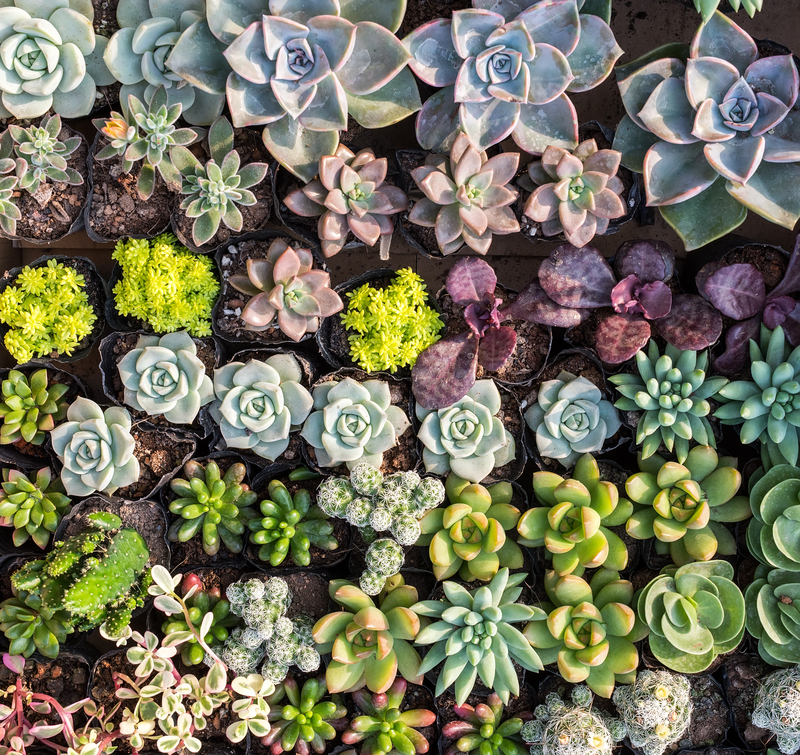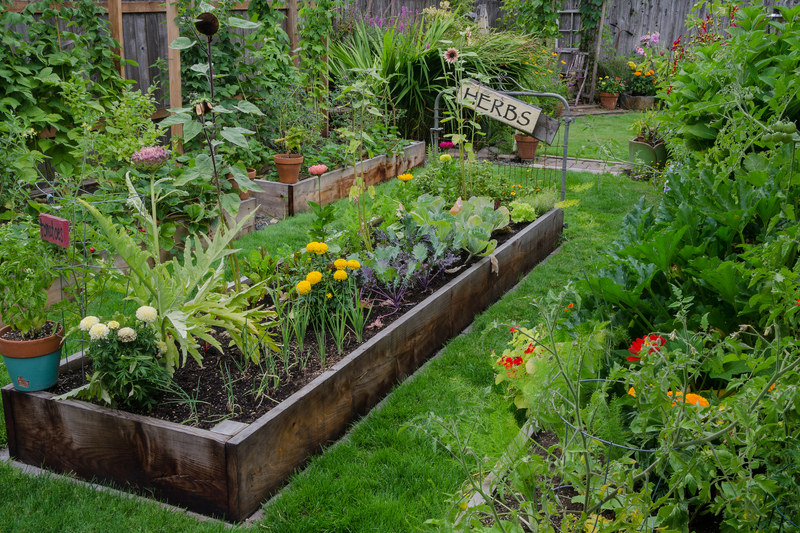Building an Interactive Garden Space for Curious Kids
Posted on 02/09/2025
Building an Interactive Garden Space for Curious Kids
Are you looking to create a fun, educational, and interactive garden space for kids in your backyard or community? With a little planning and creativity, a kid-friendly garden can nurture curiosity, foster a love for nature, and become an unforgettable hands-on learning environment. In this comprehensive guide, discover everything you need to know about designing, building, and maintaining an interactive children's garden that engages, entertains, and educates!
Why Create a Kid-Centric Interactive Garden?
Children are naturally inquisitive--they love to dig, discover, and explore the world around them. An interactive garden for children offers a safe space where they can learn, play, and grow. Below are some compelling reasons to embark on this exciting project:
- Hands-on learning: Gardening introduces basic biology, ecology, seasons, and life cycles in a fun, tactile way.
- Encourages healthy habits: Kids are more likely to try vegetables and fruits they've grown themselves.
- Sparks creativity and exploration: Nature play and inquiry-based activities inspire imagination and discovery.
- Builds responsibility and patience: Taking care of plants teaches persistence, empathy, and delayed gratification.
- Promotes outdoor activity: Better than screen time, interactive gardens get children moving, digging, and exploring outside.

Planning the Perfect Children's Interactive Garden Space
Before grabbing your shovel, it's essential to design a children's garden space that aligns with your kids' interests, space, and safety. Here are critical factors to consider in your planning phase.
1. Location, Location, Location
- Choose a safe and visible area: Select a spot you can easily supervise, away from potentially hazardous equipment or tools.
- Sunlight and soil: Most vegetables and flowers require 6+ hours of sun. Test the soil and amend if necessary for healthy plant growth.
- Size matters: Start small and expand as your children's interest and your confidence grow.
2. Involve Kids in the Design
*Let kids help sketch or list what they'd love to grow and do in their garden.*
- Ask them about their favorite colors, scents, and snacks.
- Encourage them to choose quirky features or garden themes (e.g., butterfly, pizza, or fairy garden).
- *Small ownership equals big excitement and more engagement!*
3. Ensure Accessibility and Safety
- Design raised beds or low planting boxes for little hands.
- Use wide, smooth pathways to allow easy walking, running, and wheelchair/stroller access.
- Opt for non-toxic plants and avoid sharp tools or chemicals. Safety always comes first!
Essential Features of an Interactive Kids' Garden
The most engaging garden spaces for curious kids combine creativity, practicality, and play. Here are top features to include for a rich, immersive gardening experience:
1. Sensory Zones
- Tactile plants: Lamb's ear, ornamental grasses, succulents, and moss for touch.
- Fragrant herbs: Lavender, mint, rosemary, and lemon balm for scent exploration.
- Visual diversity: Brightly colored blooms, variegated foliage, and different plant heights.
- Sound: Rustling grasses or seedpods, bamboo chimes, and water features.
2. Edible Corners
Growing their own food is pure magic for children! Create small edible gardens for kids stocked with:
- Sweet cherry tomatoes, sugar snap peas, baby carrots, and strawberries.
- Herb spirals with basil, parsley, and chives (perfect for tasting and smelling).
- Pumpkin or sunflower patches for larger, dramatic harvests.
3. Play and Discovery Elements
- Bug hotels & butterfly houses: Invite helpful insects and pollinators.
- Mazes or winding paths: Stimulate exploration and play.
- Water play: Child-safe fountains, shallow ponds, or water tables for splashing and learning.
- Secret hideouts: Willow tunnels, bean teepees, or sunflower forts for imaginative games.
4. Garden Art & DIY Projects
- Stepping stone paths (kids can decorate their own stones)
- Painted rocks, windcatchers, and upcycled garden markers
- Mini fairy or dinosaur gardens
Choosing the Best Plants for an Interactive Garden with Kids
For a thriving and safe children's interactive garden, select plants that are:
- Easy to grow and quick to sprout (for impatient little gardeners!)
- Safe--non-toxic and free from spikes, thorns, or irritating sap
- Colorful and interesting with unique shapes, textures, or scents
Kid-Friendly Plant Ideas
- Sunflowers - tall, cheerful, and perfect for measuring growth
- Sugar snap peas - delicious, edible pods and vertical growth
- Radishes - sprout quickly and are easy to harvest
- Strawberries - sweet treats and low maintenance
- Pumpkins - massive leaves, fun vines, and rewarding harvests
- Lamb's ear - soft, fuzzy leaves ideal for sensory play
- Marigolds or nasturtiums - bright blooms, edible petals, and natural pest repellents
Step-by-Step Guide: Building Your Interactive Kids' Garden
Ready to turn your vision of an interactive garden space for kids into reality? Follow these steps:
Step 1: Prepare the Site
- Clear weeds, rocks, and debris.
- Test and amend soil (add compost for rich nutrients).
- Mark out beds, paths, and activity zones using string or garden hoses.
Step 2: Build Garden Beds and Pathways
- Construct raised beds or use large planting containers for accessibility.
- Lay mulch, stepping stones, or bark chips on paths to keep mud at bay.
Step 3: Plant with a Purpose
- Let kids help with planting seeds, bulbs, and seedlings.
- Use labeled markers (DIY with painted stones or wooden spoons).
- Mix edible plants, sensory selections, and flowers for variety and excitement.
Step 4: Add Interactive & Playful Elements
- Install bug hotels, water features, art displays, or small climbing structures.
- Set up shaded resting nooks with benches, teepees, or hammocks.
- Leave space for digging, exploring, and spontaneous play.
Step 5: Engage & Explore Year-Round
- Plan regular garden tasks: planting, watering, harvesting, weeding, and journaling.
- Rotate crops, add new art, and change up activities with the seasons.
- Host scavenger hunts, garden picnics, or craft sessions to keep kids involved.
Ideas for Interactive Learning in the Garden
An interactive children's garden space is the ultimate outdoor classroom. Here are ideas to spark engagement and deeper learning:
- Start a nature journal: Track weather, plant growth, insect sightings, and personal reflections.
- Conduct science experiments: Test soil pH, make compost, study pollination, or compare sun/shade plant growth.
- Explore garden-to-table eating: Pick and wash veggies for snacks, try simple recipes, or create taste tests.
- Care for wildlife: Build birdhouses, monitor butterflies, or create toad habitats.
- Incorporate story time: Read picture books or write stories inspired by garden adventures.
Year-Round Activities for Curious Kids in the Garden
Gardening is not just a spring or summer affair! Help kids stay connected to their children's interactive garden all year long:
Spring
- Start seeds indoors or outdoors
- Plant early crops: peas, lettuce, radishes
- Assemble bug hotels and prepare pollinator gardens
Summer
- Harvest veggies and fruits
- Host picnic days, garden games, or water play
- Maintain beds: mulch, weed, and water
Autumn
- Collect leaves, seeds, and make autumn crafts
- Plant bulbs for spring
- Compost spent plants or start worm bins
Winter
- Plan garden layouts and research new plants
- Feed birds and observe animal tracks in the snow
- Try indoor herb gardens or sprouting microgreens
Tips for Making Your Garden Inclusive and Accessible
- Offer adaptive tools: Lightweight, ergonomic garden tools for different skill levels
- Accessible raised beds: Design for all abilities--consider table-height beds for wheelchairs
- Sensory-friendly options: Include quiet zones, varied textures, and gentle play areas
- Multi-age activities: Host workshops, group games, or collaborative art projects for siblings and friends
Simple Rules for a Successful Kids' Garden Space
- Let kids get dirty: Messy hands, muddy boots, and big grins are signs of success!
- Encourage observation, not perfection: Allow mistakes, celebrate small wins, and wander with curiosity.
- Keep it flexible: Adapt to kids' changing interests and abilities over time.
- Prioritize safety: Educate about safe plants and proper tool use.
- Focus on fun first: Discovery and joy are the ultimate goals of interactive gardening.

Resources and Inspiration for Kids' Interactive Gardens
- Books: "Roots, Shoots, Buckets & Boots" by Sharon Lovejoy; "The Garden Classroom" by Cathy James
- Websites: KidsGardening.org, local extension services
- Community gardens: Look for local groups, workshops, and seed exchanges
Conclusion: Nurture Curiosity with an Interactive Garden
Creating an interactive garden space for curious kids is a wonderful way to grow more than just plants--you'll nurture wonder, responsibility, and a lifelong love for the natural world. With thoughtful design, age-appropriate features, and loads of creative opportunities, your garden can be a magical classroom that inspires the next generation of nature lovers. So roll up your sleeves, invite your young gardeners to dream big, and watch as your interactive children's garden blossoms--one discovery at a time.
Start digging, dreaming, and exploring today! Your backyard adventure awaits.

